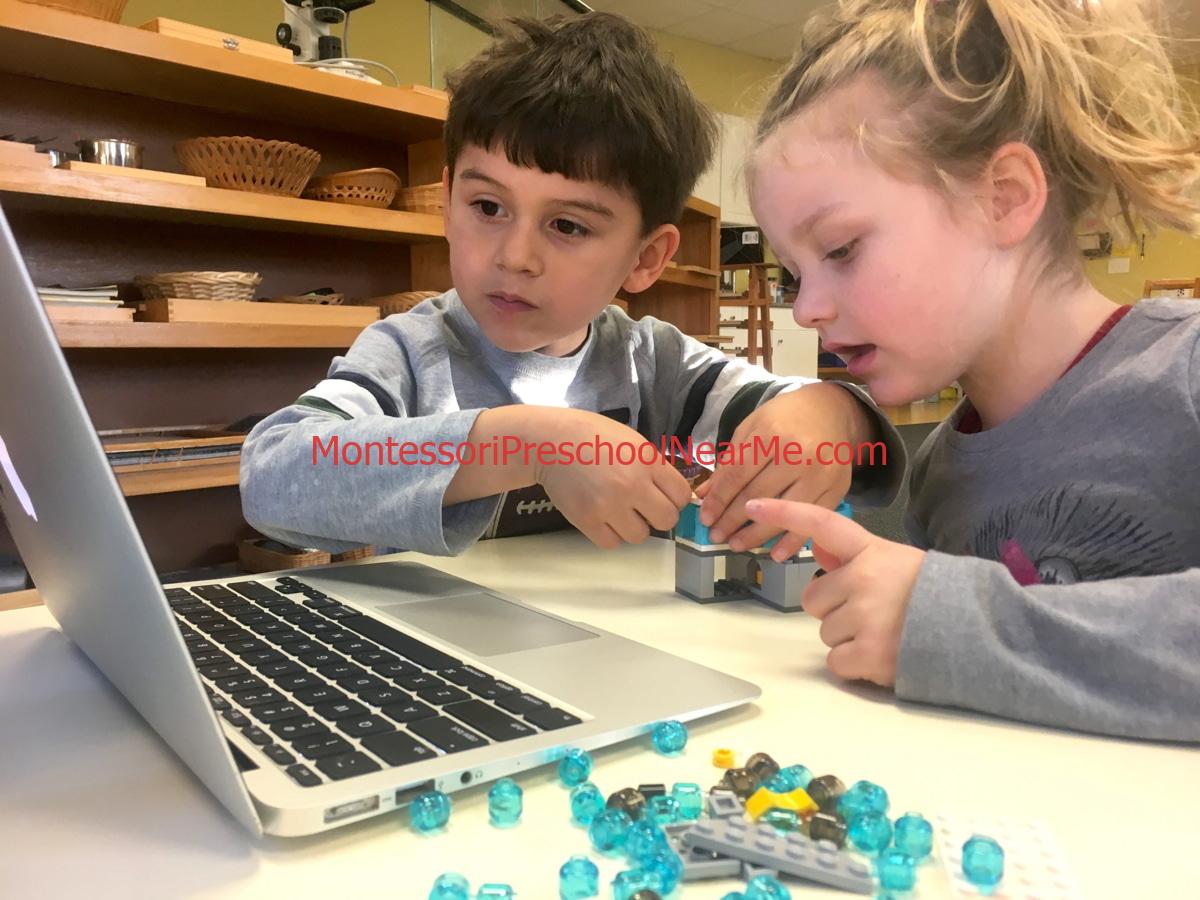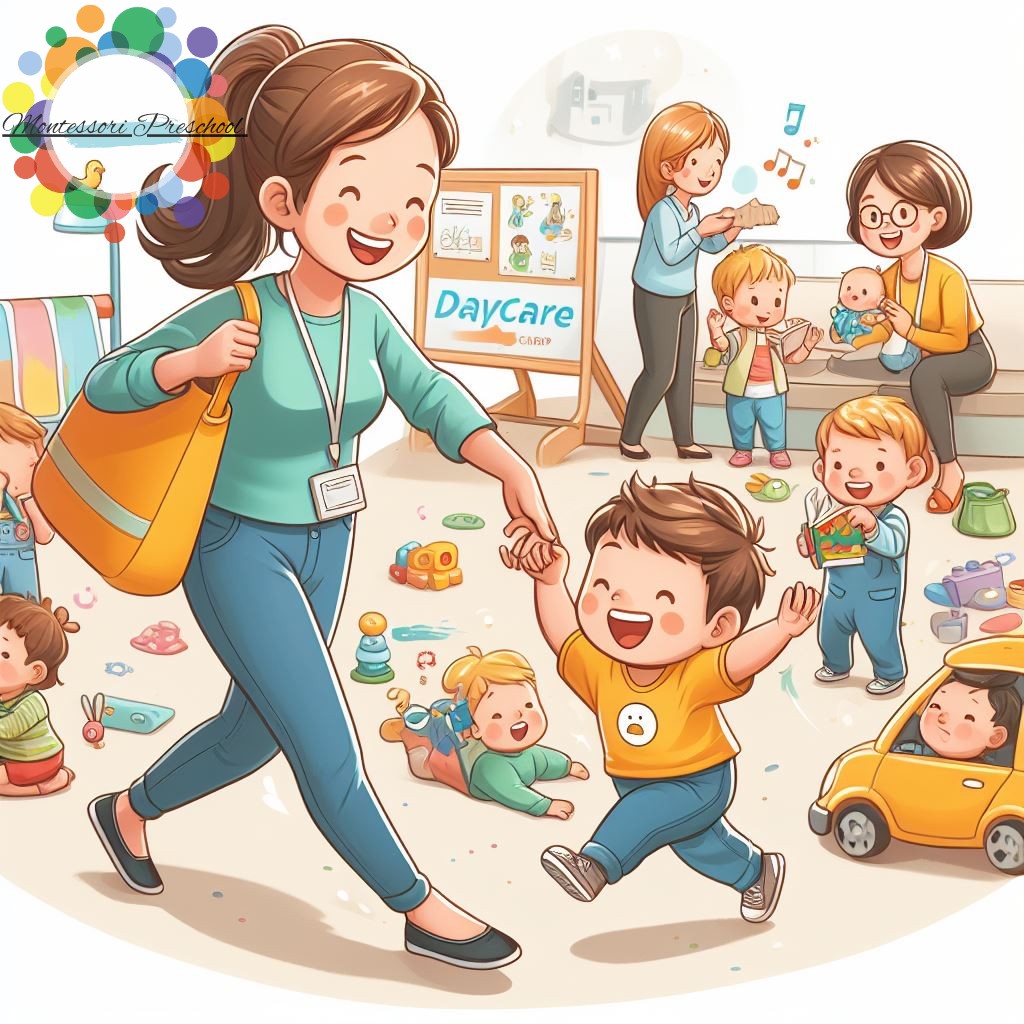
Imagine the joy of watching your child grow, explore, and thrive in a Montessori-inspired space right in the comfort of your own home. Montessori education is not just limited to schools; as parents, caregivers, and educators, you can bring the principles of Montessori into your daily lives and empower your child’s learning experiences. In this comprehensive guide, we will show you how to create a Montessori environment at home, fostering independence, self-motivation, and unlocking your child’s full potential. Join the ranks of successful Montessori graduates, including the founders of Google and Amazon, and start your journey today to create a nurturing, enriching, and stimulating environment for your little one.
What is Montessori Education?
First developed by Dr. Maria Montessori in the early 1900s, Montessori education is a child-centered approach that emphasizes independence, freedom within limits, and hands-on learning. The Montessori method recognizes that children are naturally curious and have an innate desire to learn. It provides a carefully prepared environment that allows children to explore and discover at their own pace.
Benefits of Montessori Education
Montessori education offers numerous benefits for children, setting them up for success both academically and personally. Some of the key benefits include:
- Development of independence and self-confidence
- Promotes a love for learning
- Foster a sense of responsibility and accountability
- Encourages critical thinking and problem-solving skills
- Develops social and emotional intelligence
- Cultivates creativity and imagination
- Builds strong foundational skills in reading, writing, and math
Preparing the Montessori Environment
One of the key aspects of Montessori education is the carefully prepared environment. To create a Montessori-inspired space at home, consider the following tips:
a. Choosing the Right Space
Select a quiet and clutter-free area in your home where your child can focus and explore without distractions. It could be a corner of a room, a designated play area, or even a small table and chair set up specifically for Montessori activities.
b. Organization and Orderliness
Adopt the Montessori principle of order by arranging materials and activities on low open shelves. Use labeled storage bins or baskets to keep materials organized and easily accessible for your child.
c. Incorporate Natural Materials
Montessori materials are typically made of natural materials such as wood, metal, and fabric. Avoid using plastic or battery-operated toys as much as possible. Opt for materials that are aesthetically pleasing, inviting, and promote a connection with nature.
d. Importance of Beauty
Aesthetics play a significant role in the Montessori environment. Choose furniture, artwork, and décor that are visually appealing and provoke a sense of calm and wonder. Add plants, natural light, and soft colors to create a peaceful and inviting space.
e. Create Orderly Learning Spaces
Designate specific areas for different activities such as a reading nook, a writing station, a math corner, or an area for practical life skills. This allows your child to develop a sense of order and independence as they navigate through different learning experiences.
Montessori Materials and Activities
Montessori education relies on carefully designed materials and activities that are specially curated to support children’s learning and developmental needs. Here are some essential Montessori materials and activities you can incorporate at home:
a. Practical Life Skills
Practical life activities form the foundation of Montessori education. They include everyday tasks such as pouring, spooning, buttoning, and tying shoelaces. These activities help develop fine motor skills, coordination, concentration, and independence.
b. Sensorial Materials
Sensorial materials are designed to stimulate the senses and help children explore the world around them. They include activities that focus on sight, touch, sound, taste, and smell. Examples include color tablets, sound boxes, and tactile materials like sandpaper letters.
c. Language and Literacy
Montessori language materials are designed to help children develop their reading, writing, and communication skills. These include sandpaper letters, moveable alphabets, and specially designed language cards and books.
d. Math Materials
Montessori math materials provide hands-on experiences to help children understand mathematical concepts. Materials such as number rods, rods and numerals, and golden beads aid in developing a solid foundation in numeracy and mathematical operations.
e. Cultural Materials
Montessori education fosters a global perspective and appreciates cultural diversity. Cultural materials introduce children to geography, history, science, and the arts. Incorporate world maps, puzzles, artifacts, and books to ignite curiosity and understanding.
Creating a Daily Routine
A well-defined daily routine is a crucial aspect of Montessori education at home. Establishing consistency and predictability helps children feel secure, promotes independence, and allows them to take ownership of their activities. Here are some tips for creating a Montessori-inspired daily routine:
a. Consistent Wake-Up and Bedtime
Maintain a regular wake-up and bedtime routine to establish a sense of structure and consistency. Children thrive on predictability, and a consistent sleep schedule contributes to their overall well-being and learning readiness.
b. Morning Routines
Designate a specific area for your child to engage in independent activities such as dressing, washing hands, brushing teeth, and tidying up. Encourage your child to complete these tasks on their own, fostering independence and responsibility.
c. Work Periods and Free Play
Incorporate dedicated work periods where your child engages in Montessori activities independently. These work periods can be interspersed with free play, where your child has the freedom to choose their activities and follow their interests.
d. Outdoor Time
Spending time outdoors is an essential component of the Montessori philosophy. Make it a priority to incorporate nature walks, gardening, and outdoor exploration into your child’s daily routine. Nature provides endless learning opportunities and promotes well-being.
e. Consistent Meal Times
Enjoying meals together as a family is an integral part of the Montessori routine. Encourage your child to participate in meal preparation, setting the table, and clearing up afterward. This promotes practical life skills, responsibility, and a sense of community.
Fostering Independence and Self-Motivation
The Montessori method puts a strong emphasis on fostering independence and self-motivation in children. Here are some strategies you can implement to encourage these qualities in your child:
a. Provide Freedom within Limits
Offer choices within a structured environment. Give your child opportunities to make decisions, but ensure there are clear boundaries and expectations. This encourages independence while also providing a sense of security.
b. Encourage Self-Correction
Allow your child to learn through trial and error. Avoid rushing to correct mistakes; instead, provide guidance and support as needed. This helps your child develop problem-solving skills and a growth mindset.
c. Model and Demonstrate
Children learn best through observation and imitation. Be a role model for your child by demonstrating independence, responsibility, and a love for learning. Show enthusiasm and curiosity in your own everyday activities.
d. Nurture Intrinsic Motivation
Avoid external rewards and focus on cultivating intrinsic motivation. Help your child develop a love for learning by providing engaging and meaningful learning experiences. Encourage curiosity, creativity, and a sense of wonder.
e. Support Independence in Daily Tasks
Break down tasks into smaller, manageable steps and allow your child to complete them independently. This could include dressing themselves, preparing their own snacks, or cleaning up after playtime. Build confidence by acknowledging their efforts and celebrating their achievements.
Montessori Education and Technology
In today’s digital age, technology plays a significant role in our lives. When it comes to Montessori education at home, it’s important to find a balance between tech and hands-on learning experiences. Here are some guidelines for incorporating technology in a Montessori-inspired way:
a. Limit Screen Time
Set clear limits on screen time and ensure that technology does not replace real-life experiences and hands-on activities. Monitor the quality and content of the digital media your child engages with.
b. Use Technology as a Tool
Technology can be a valuable tool for learning, research, and creativity. Introduce educational apps, e-books, and interactive websites that align with the Montessori philosophy. Use technology as an extension of the Montessori materials and activities.
c. Emphasize Real-Life Experiences
Encourage your child to engage in real-life experiences rather than relying solely on virtual simulations. Balance screen time with outdoor play, social interactions, and hands-on exploration of the world around them.
d. Model Healthy Technology Habits
Be mindful of your own technology use and model healthy habits for your child. Set aside dedicated tech-free times to foster connections, engage in creative activities, and promote face-to-face interactions.
e. Choose Quality Educational Resources
When incorporating technology, choose high-quality educational resources that support the principles of Montessori. Look for apps, websites, and digital media that encourage exploration, problem-solving, and independent learning.
Montessori Education for Different Age Groups
Montessori education is designed to accommodate the specific needs and developmental stages of children at different ages. Here are some guidelines for implementing Montessori principles for different age groups:
a. Montessori Education for Infants and Toddlers
The Montessori approach begins from birth. Focus on creating a safe and nurturing environment that encourages independent movement and exploration. Provide developmentally appropriate materials and activities that engage their senses and support their natural development.
b. Montessori Education for Preschoolers
Preschool-age children thrive in an environment that allows them to engage in practical life activities, sensorial experiences, early language development, and math exploration. Incorporate open-ended toys, puzzles, and materials that encourage problem-solving and creativity.
c. Montessori Education for Elementary Age
Elementary-age children are ready for more abstract thinking and exploration. Provide opportunities for deeper research, independent projects, and cooperative learning experiences. Foster a sense of responsibility and respect for the environment and encourage a love for learning across different subject areas.
d. Montessori Education for Adolescents
Montessori education for adolescents focuses on real-world engagement, hands-on experiences, and community involvement. Encourage adolescents to take on leadership roles, participate in service projects, and apply their knowledge and skills to real-world challenges.
e. Montessori Education for Special Needs Children
The Montessori approach is inclusive and can be adapted to meet the individual needs of children with special needs. Consult with Montessori-trained professionals and adapt materials and activities to provide tailored and appropriate learning experiences.
Montessori Principles in Everyday Life
Beyond the Montessori environment, you can incorporate Montessori principles into your everyday life. Here are some suggestions for embracing the Montessori philosophy beyond education:
a. Foster Independence at Home
Encourage your child to take responsibility for chores, self-care tasks, and personal belongings. Involve them in meal preparation, setting the table, and cleaning up. This promotes independence, self-reliance, and a sense of ownership.
b. Encourage a Love for Nature
Expose your child to the wonders of nature through regular outdoor activities, gardening, and nature walks. Teach them about sustainability, the environment, and the importance of caring for our planet.
c. Limit Materialism and Consumerism
Teach your child the value of experiences and meaningful connections over material possessions. Encourage them to engage in purposeful play, creative activities, and hands-on learning experiences, rather than relying on excessive toys and gadgets.
d. Cultivate a Growth Mindset
Emphasize the importance of effort, perseverance, and a growth mindset. Encourage your child to embrace challenges, view mistakes as opportunities for learning, and develop resilience in the face of setbacks.
e. Follow Your Child’s Interests
Observe your child’s interests and passions and provide opportunities for further exploration and learning. Support their natural curiosity and encourage them to pursue their interests, whether it’s through books, experiments, or engaging in related activities.
FAQs about Montessori Education at Home
Here are some frequently asked questions about Montessori education at home:
a. Can I implement Montessori education at home if I’m not a trained Montessori teacher?
Absolutely! Montessori education is not limited to certified educators. As a parent or caregiver, you can create a Montessori-inspired environment and incorporate Montessori principles into your child’s daily life. However, it’s always beneficial to educate yourself about the Montessori philosophy and consult with Montessori-trained professionals for guidance.
b. Do I need to buy specialized Montessori materials for my home?
While Montessori materials are carefully designed to support children’s learning and development, you don’t necessarily need to purchase specialized materials for your home. Many Montessori-inspired activities can be created using common household items or DIY materials. Focus on providing open-ended, hands-on experiences and materials that promote exploration and independence.
c. How can I balance Montessori principles with other educational approaches?
Montessori education can be combined with other educational approaches to create a personalized learning experience for your child. The key is to understand your child’s unique needs and interests and tailor their education accordingly. Embrace the principles of child-centered learning, hands-on experiences, and a love for learning, regardless of the specific educational approach you follow.
d. How do I deal with challenges or resistance from my child when implementing Montessori principles at home?
Resist the temptation to force your child into the Montessori mold. Each child is unique and may react differently to the Montessori approach. Be patient and observant, and adapt your methods to suit your child’s individual needs and interests. Seek support from Montessori-trained professionals if you encounter challenges or require guidance.
e. Can Montessori education be combined with technology and screen time?
While the Montessori philosophy promotes hands-on, tangible learning experiences, technology can still be incorporated in a balanced way. Choose age-appropriate, educational technology resources that align with Montessori principles, and set clear limits on screen time. Remember to prioritize real-life experiences and interactions over excessive reliance on screens.
Conclusion
Montessori education at home provides an incredible opportunity for parents, caregivers, and educators to unleash the power of Montessori principles and create a nurturing, enriching, and stimulating environment for their child. By preparing a carefully designed Montessori-inspired space, incorporating meaningful materials and activities, and fostering independence and self-motivation, you can unlock your child’s full potential and lay the foundation for a lifetime of learning. Embrace the principles of Montessori education at home, and watch your child grow, explore, and thrive in an environment that celebrates their curiosity, creativity, and love for learning. Start your journey today and join the ranks of successful Montessori graduates!



